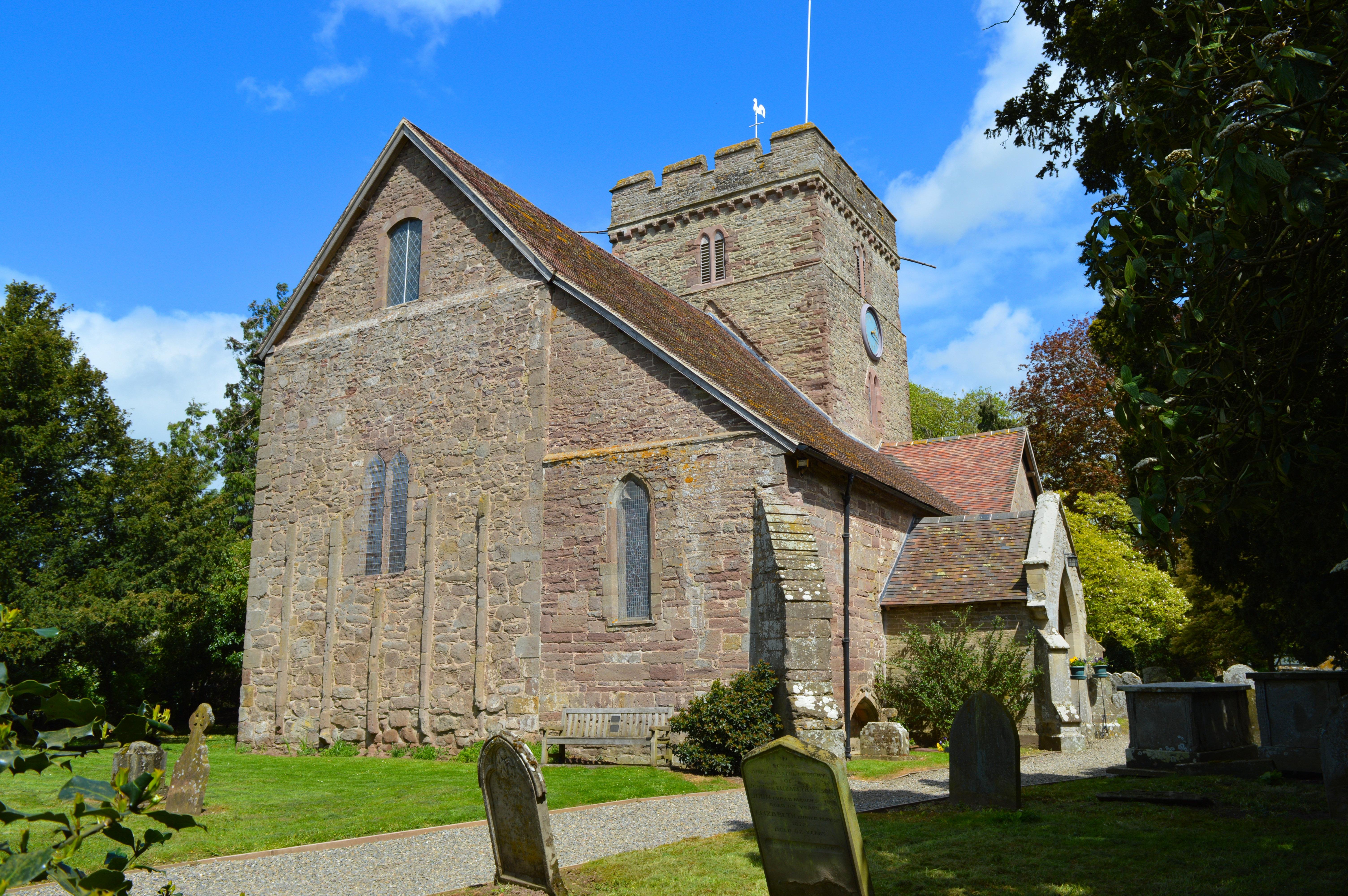St Mary the Virgin
Bromfield, Shropshire
A pleasant hour's walk above the River Teme leads from Ludlow to St Mary's, which began life as a Norman priory church and still shares its riverside setting with the old Priory Gatehouse.

A beautifully proportioned cruciform church, St Peter’s has been serving the parish of Stanton Lacy since the early 11th century.
Stanton Lacy, Shropshire
St Peter’s is one of the few churches mentioned in the Domesday Book but its history goes back even further. It’s Saxon origins are still visible in the stonework in the west and north walls of the nave and part of north transept, with its thin pilaster strips. The church has incorporated many developments over time. The chancel is mainly 13th century with the tower and south transept built a century later; there are notable 14th century tomb recesses, one allegedly for Edmund de Mortimer; and there is a 17th century chest.
Victorian developments include the stained glass windows; altar, with reredos of Caen stone; and our wonderful organ, built by Gracy and Davidson of London, and installed in 1854. Whilst the current church is Saxon in origin, the site may have been a place of worship since well before then. Visiting archaeologists have suggested that the churchyard is much older than St Peter’s.
The semi circular shape of the churchyard suggests it was once round and contained a Celtic church. One legend attributes such a structure to St Milburga, the daughter of King Penda of Mercia. She was being pursued by a Welsh prince, when she crossed the river Corve, close to the present church. She prayed for deliverance and it came in the form of a flood. The river level rose very quickly and engulfed the adjacent land, blocking the path of her pursuer. By way of thanks, she is supposed to have founded a church here in 7th century. We know that she was in the area around this time, having founded Wenlock Priory in AD 630. In addition, to this day, the rapid flooding of the river Corve is still a feature of the local landscape.
Regardless of its exact origins, St Peters has lived through some of the most momentous and challenging times in our history; bubonic plague, the Civil War and two World Wars. It has survived and still offers a place of worship, reflection and calm, especially as we all face new challenges ahead.

Bromfield, Shropshire
A pleasant hour's walk above the River Teme leads from Ludlow to St Mary's, which began life as a Norman priory church and still shares its riverside setting with the old Priory Gatehouse.
Ludlow, Shropshire
Ludlow possesses one of the great parish churches of England, and one of the largest, St Laurence's, is known, with good reason, as the Cathedral of the Marches.
Pipe Aston, Herefordshire
Tiny, remote and very rural, the church here has a great treasure: a Norman tympanum showing the Lamb of God flanked by a griffin and a winged bull.